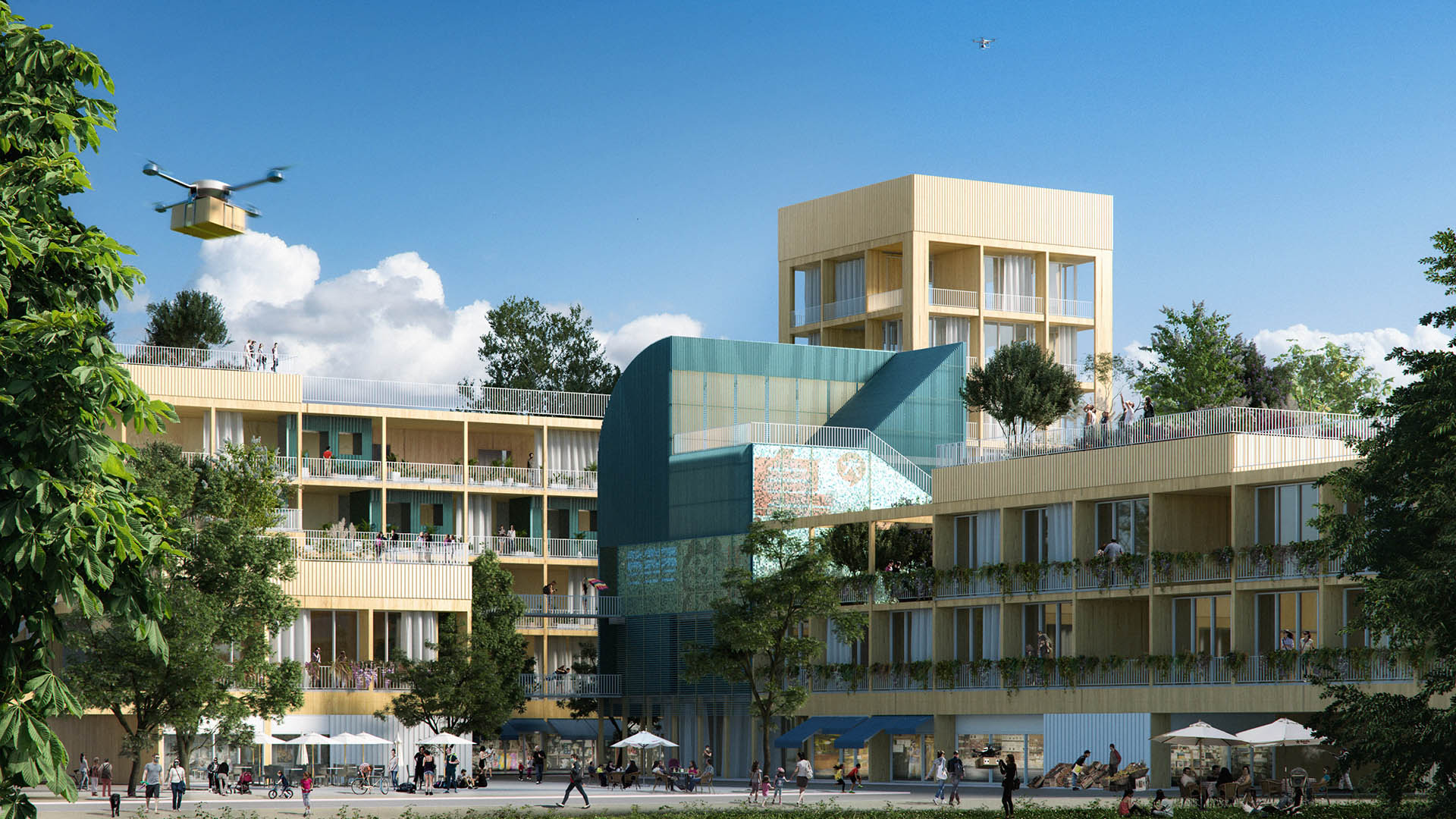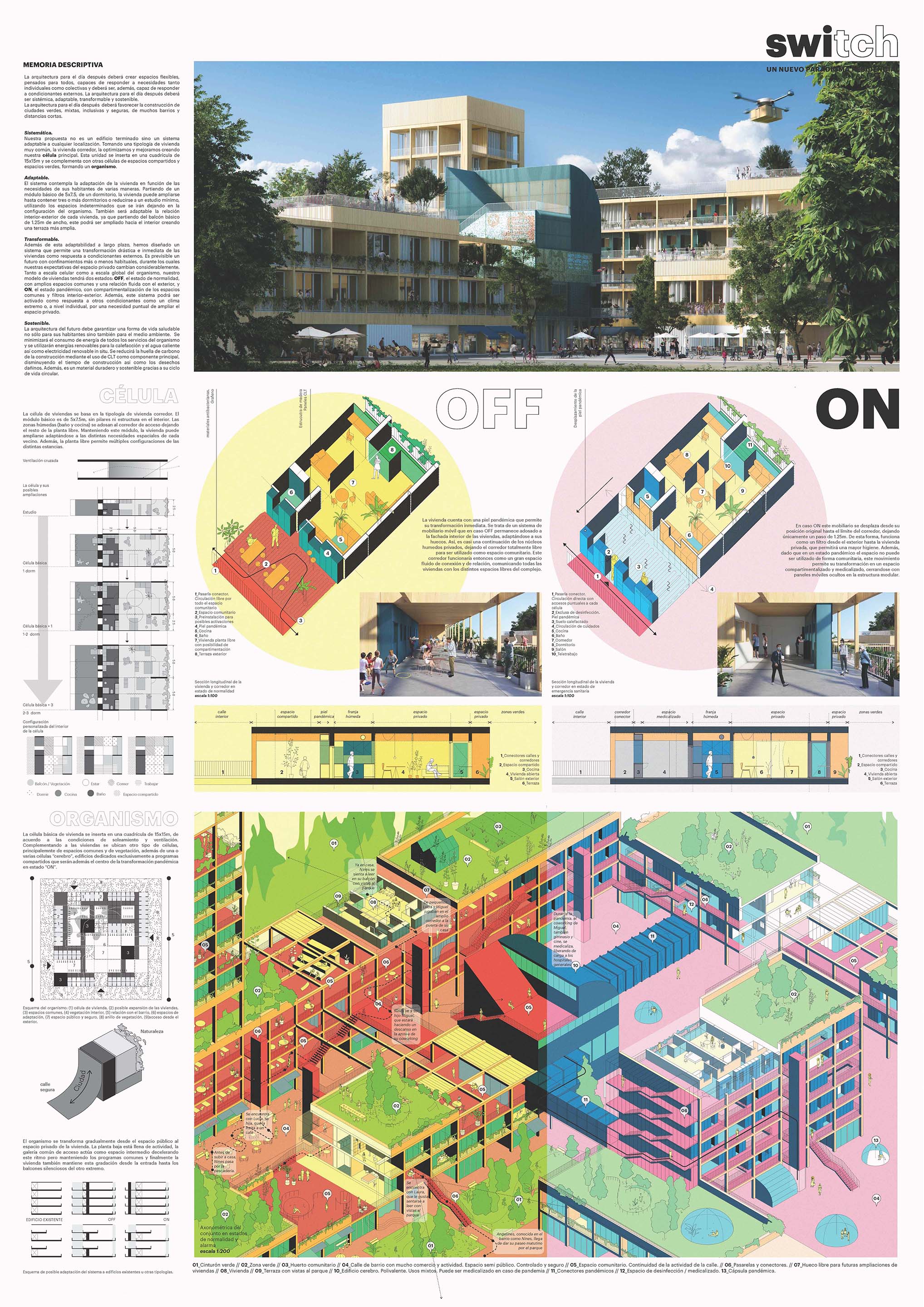The architecture of the post-pandemic future must create flexible spaces, designed for everyone, capable of responding to both individual and collective needs. It must be able to respond to external conditions in an agile way. Architecture for the day of tomorrow must be systematic, adaptable, transformable and sustainable. Urban regulations should promote green, mixed, inclusive and safe cities, with the capacity to respond quickly thanks to the management of data and information of the 21st century and with a more agile and automated management.
Systematic Architecture
This proposal from AGi Architects is not a finished building but a system adaptable to any location. Taking a very common type of house, the corridor house, is optimized and improved by creating the main cell. This unit is inserted in a 15x15m grid and is complemented by other cells of shared spaces and green spaces, forming an organism.
Adaptable Construction
The system contemplates the adaptation of the dwelling according to the needs of its inhabitants in various ways. Starting from a basic module of 5 × 7.5m with one bedroom, the house can be expanded to contain three or more bedrooms or reduced to a minimum study, using the multipurpose spaces that make up clusters as a reservoir or appendage of the organism. The interior-exterior relationship of each home will also be adaptable, since starting from the basic 1.25m wide balcony, it can be extended towards the interior creating a larger terrace.
Transformable Spaces
In addition to this long-term adaptability, a system has been designed that allows a drastic and immediate transformation of homes in response to external conditions. A future with more or less usual confinements is foreseeable, during which our expectations of private space change considerably. The organism will have two states: OFF, the state of normality, with large common spaces and a fluid relationship with the outside, and ON, the pandemic state, with compartmentalization of common spaces and interior-exterior filters. This system may be activated in response to other conditions such as extreme weather or specific needs to expand the private space.
Sustainable Environment
The architecture of the future must guarantee a healthy way of life not only for its inhabitants but also for the environment. The energy consumption of all the services of the organism will be minimized with high levels of insulation and renewable energies will be used for heating and hot water as well as self-generation of electricity with renewable technologies. Construction’s carbon footprint will be reduced by using CLT as the main component, reducing construction time as well as harmful waste.

